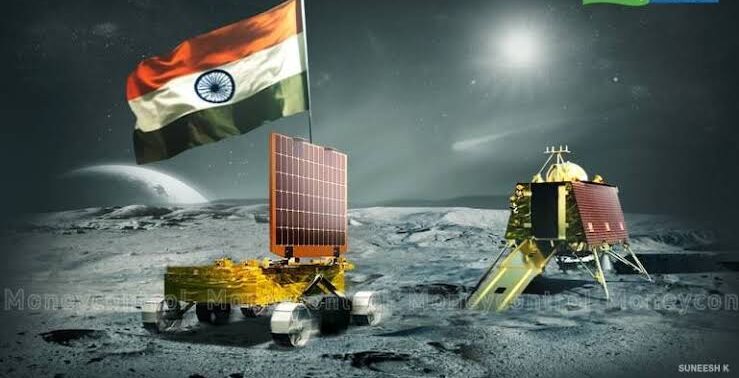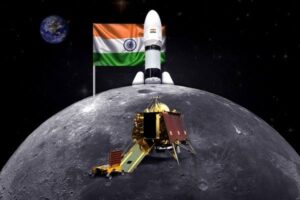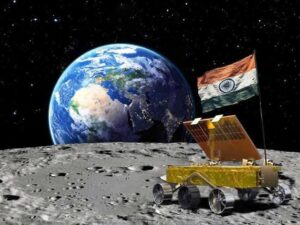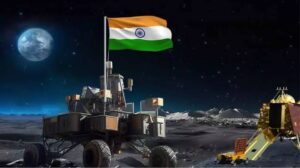Chandrayaan 3 Mission Details: India’s Next Leap in Lunar Exploration

Chandrayaan 3 Mission: India’s Next Leap in Lunar Exploration
India’s Chandrayaan-3 mission is set to further propel the nation’s achievements in space exploration, building upon the successes of its predecessor, Chandrayaan-2. This follow-on mission aims to demonstrate India’s prowess in safe lunar landings and rover mobility while conducting crucial scientific experiments on the lunar surface. With its innovative technology and ambitious objectives, Chandrayaan-3 is poised to solidify India’s position as a key player in lunar exploration.
When Chandrayaan 3 is launch-
Chandrayaan-3, in its precise orbit, has begun its journey to the Moon. Health of the Spacecraft is normal. The ‘Launch Rehearsal’ simulating the entire launch preparation and process lasting 24 hours has been concluded. The launch is scheduled for July 14, 2023, at 14:35 Hrs.
Chandrayaan 3 Mission Configuration and Components
Chandrayaan-3 comprises a Lander module (LM), Propulsion module (PM), and Rover, each equipped with specialized payloads to fulfill the mission’s objectives. The LM is tasked with executing a soft landing on the lunar surface, deploying the Rover for in-situ analysis, and conducting scientific experiments. The PM facilitates the journey from Earth to the Moon, carrying the LM to its final lunar orbit before separation. The Rover, housed within the LM, is equipped with advanced instruments to analyze the lunar terrain and composition.
Chandrayaan 3 Advanced Technology for Lunar Exploration
To achieve its mission objectives, Chandrayaan-3 incorporates a range of advanced technologies. These include altimeters and velocimeters for precise navigation and landing, an inertial measurement system for accurate positioning, and a sophisticated propulsion system for maneuverability in space. Additionally, hazard detection and avoidance systems ensure safe touchdown on the lunar surface, while specialized payloads enable scientific exploration and analysis.
| Parameter | Specifications |
|---|---|
| Mission Life (Lander & Rover) | One lunar day (~14 Earth days) |
| Landing Site (Prime) | 4 km x 2.4 km, 69.367621 S, 32.348126 E |
| Science Payloads | Lander: RAMBHA, ChaSTE, ILSA, LRA Rover: APXS, LIBS |
| Two Module Configuration | Propulsion Module (PM), Lander Module (LM) |
| Mass | PM: 2148 kg, LM: 1752 kg (including Rover of 26 kg) |
| Power Generation | PM: 758 W, LM: 738W (WS with Bias), Rover: 50W |
| Communication | PM: IDSN, LM: IDSN, Rover: Lander + Chandrayaan-2 Orbiter (contingency link) |
| Lander Sensors | Various sensors including LP, KaRA, LPDC, LHDAC, LASA, LDV, LHVC, Micro Star sensor, Inclinometer, Touchdown sensors ( You are reading Chandrayaan 3 Mission ) |
| Lander Actuators | Reaction wheels (4 nos), Lander Propulsion System (bi-propellant, 4x 800N engines, 8x 58N thrusters) |
| Lander Mechanisms | Lander leg, Rover Ramp, ILSA, RAMBHA & ChaSTE payloads, Umbilical connector Protection Mechanism, X-Band Antenna |
| Lander Touchdown Specifications | Vertical velocity: ≤ 2 m/sec, Horizontal velocity: ≤ 0.5 m/sec, Slope: ≤ 12 degrees |
| Propulsion Module Payload | SHAPE ( Chandrayaan 3 Mission ) |
Scientific Objectives and Payloads Of Chandrayaan 3 Mission
The primary scientific objectives of Chandrayaan-3 include demonstrating safe and soft landing on the lunar surface, showcasing rover mobility, and conducting in-situ scientific experiments. The payloads onboard the LM and Rover are designed to achieve these objectives, with instruments such as the Laser Induced Breakdown Spectroscope (LIBS) and Alpha Particle X-ray Spectrometer (APXS) enabling elemental analysis of lunar soil and rocks. Other payloads, like the Instrument for Lunar Seismic Activity (ILSA) and Radio Anatomy of Moon Bound Hypersensitive ionosphere and Atmosphere (RAMBHA), aim to study lunar seismic activity and atmospheric conditions.
Also read – Chandrayaan 3 News Update: Unveiling India’s Lunar Exploration Triumph
Chandrayaan 3 Mission Specifications and Lifespan
Chandrayaan-3 is designed to operate for one lunar day, approximately 14 Earth days, conducting experiments and gathering data to advance our understanding of the Moon’s composition and geology. The mission’s landing site, carefully chosen near the lunar south pole, offers unique scientific opportunities to explore previously uncharted territory. With a total mass of 3900 kg and advanced communication systems, Chandrayaan-3 is well-equipped to fulfill its scientific objectives and contribute valuable insights to lunar exploration.

Read- Uttarakhand Tunnel Rescue
India’s Continued Leadership in Space Exploration: Chandrayaan 3 Mission
As India embarks on its Chandrayaan-3 mission, the nation reaffirms its commitment to pushing the boundaries of space exploration. By leveraging cutting-edge technology and scientific expertise, India aims to expand humanity’s understanding of the cosmos and pave the way for future missions to the Moon and beyond. Chandrayaan-3 represents not only a significant milestone in India’s space program but also a testament to the nation’s determination to explore new frontiers and inspire generations to come. ( You are reading Chandrayaan 3 Mission )















Post Comment